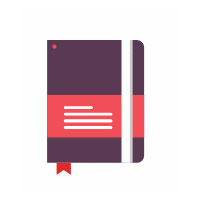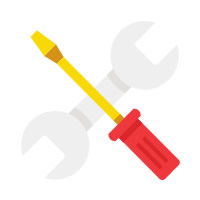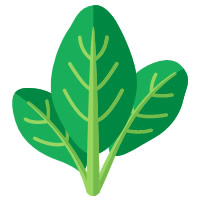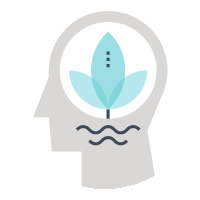1. Develop the spiritual discipline of gratitude
Gratitude is at the heart of living a happy and fulfilling life. As a spiritual discipline, gratitude is an action, rather than just a feeling. It is not just experienced but expressed. When we take the time to meditate on all the reasons we have to be grateful, we attract even more goodness.
The leading scientific expert on gratitude, Dr Robert A. Emmons, defines gratitude as having two parts: “(1) affirming goodness in one’s life and (2) recognizing that the sources of this goodness lie at least partially outside the self.”
In his research, Dr Robert Emmons found that having an ‘attitude of gratitude’ improves both emotional and physical wellbeing, as well as strengthening relationships and communities. One of his studies revealed that people who kept a gratitude journal exercised more frequently, reported fewer physical symptoms of pain, and were more optimistic about their lives.
So, the question is how you can develop the spiritual discipline of gratitude.
Well, it’s just that, a discipline. No different than getting up and going for a walk each morning. You will need to commit to this practice on a daily basis and ‘set yourself up to win’ by structuring it into your day and making it a priority.
- Buy yourself a really nice journal, something meaningful
- Go out into nature and find yourself a grateful object (This may be a seashell or small rock)
 Journaling
Journaling
Each morning when you wake up, spend 10 minutes writing in your journal. It’s important that what you write is both positive and specific. The goal is to create a list of all the reasons you have to be grateful and to describe experiences that you are grateful you had.
Grateful Object
![]() The grateful object needs to be small enough to fit into your pocket, but large enough to remind you it’s there when you sit down. Once again, you need to be disciplined enough to put the object in your pocket every morning. Throughout the course of the day, you will most likely feel the object in your pocket and it will remind you to take it out and meditate on the feeling of gratitude. Really what you’re doing is creating a mental list of all the reasons you have to be grateful. In fact, you may simply focus on the physical list you created during your morning journaling session.
The grateful object needs to be small enough to fit into your pocket, but large enough to remind you it’s there when you sit down. Once again, you need to be disciplined enough to put the object in your pocket every morning. Throughout the course of the day, you will most likely feel the object in your pocket and it will remind you to take it out and meditate on the feeling of gratitude. Really what you’re doing is creating a mental list of all the reasons you have to be grateful. In fact, you may simply focus on the physical list you created during your morning journaling session.
Challenge yourself. Commit to this practice for 100 days in a row!
2. Commit to 6 weeks of therapeutic cold showers

When you combine the historical practice of hydrotherapy, cold-water submersion practices, anecdotal evidence and the available scientific evidence, there is reason to believe that taking a cold shower three times per week for six weeks can lead to significant health benefits. Further research is required into the potential benefits for people suffering from mental or physical disorders such as rheumatism, chronic fatigue syndrome, cancer, depression and heart disease.
A cold shower is a physiological stress that may have a hormetic (beneficial) effect for many reasons:
- By forcing the body to recover normal core temperature after cooling, which may have a beneficial effect on all body systems and organs.
- The density of cold receptors in the skin is thought to be 3-10 times higher than that of warm receptors. As such, a cold shower is expected to deliver a large-scale stimulus to the brain.
- Cold water causes vasoconstriction
- Cold water may provide ‘thermal exercise’ to the body
- Whole body exposure to cold can have a positive effect on HRV and ‘reset’ the central nervous system
- Whole body exposure to cold water has been shown to increase blood levels of noradrenaline (norepinephrine). Noradrenaline is one of the key excitatory neurotransmitters in the brain and can increase cerebral blood flow.
As stated above these physiological responses may have a wide-ranging (positive) effect on the human body.
The team at the Effortless Superhuman have all experimented with therapeutic periods of cold showers, both self-experimentation and through the clinical application with clients. This experience has demonstrated benefits that are not necessarily supported by the scientific literature at the present time. This has included significant improvements in heart rate variability, sleep patterns, sleep quality, and improvements in energy levels without the use of stimulants. Many of our clients have also observed that repeated cold showers have helped them ‘get out of their heads’ and ‘back into their bodies’. Clients report ‘clarity of thought’ and an enhanced ‘sense of self’ along with a greater perception of the symptoms in their body. They also report that the ‘wired but tired’ feeling resolves and that they feel like they have hit the ‘reset’ button.
Therapeutic Cold Showers
When applying this form of therapy, begin with a ‘lukewarm’ water temperature and continually turn down the hot water over a 3 to 5-minute period until only cold-water remains. In the initial 1-2 weeks of the therapy period, your cold showers may only last 90 seconds. During this time, try to submerge your entire body including your head and face to gain the greatest response. During the course of the 6-week therapeutic phase, aim to increase your shower time to ten minutes. Frequency of application is once per day, usually in the evenings.
You can learn more about this fascinating subject by reading our 3-part blog series.
 3. Commit to ‘Tune-Ups’ every 6-8 weeks
3. Commit to ‘Tune-Ups’ every 6-8 weeks
Why is it that people treat their cars better than they treat their own mind, body and soul? Why is it that people are willing to commit to getting their car serviced twice per year in the fear of it breaking down, but wait until they are suffering from pain before seeking the advice of ‘Pain and Dysfunction’ practitioner?
Over time, stress and strain accumulate within the human body. The driving forces behind this stress and strain may vary slightly from person to person but often include:
- Work-related stress and strain (both physical and psycho-emotional)
- Inadequate hydration and low-quality water
- Poor sleeping patterns
- Static postures (both sitting and standing)
- Poor food choices (processed foods, additives, preservatives, chemicals)
- Financial stress and strain
- Time pressures
- The stress and strain of families and relationships
- Activity, sport, and training
As this stress and strain accumulates in the body over time, there are corresponding changes within the neural, respiratory and musculoskeletal systems. Often these changes are so subtle and gradual that the person is unaware that they are occurring.
- The calves gradually get tight
- The muscles surrounding the jaw get tight and restrict movement (opening and closing of the temporomandibular joint)
- Range of movement is slowly lost at key points in the body (neck, middle back, lower back and hips)
- Hamstring length shortens

Figure
The challenging part for clients is that in the initial phase (accumulative strain) there are typically no symptoms or symptoms that are so mild (tightness or tension) that they do not seek out treatment. This is known as the ‘subclinical’ phase and is represented by the dark brown colour in the figure above.
However, as this strain continues to accumulate, it reaches a ‘Point of Overload’ and this is when people often seek treatment due to the appearance of unwanted and often unbearable symptoms – headaches, migraines, neck and back pain, knee pain, pins and needles, or muscular strains. The person has now entered the ‘Clinical’ phase (Green) and requires treatment to alleviate this stress and strain and to overcome their unwanted symptoms.
Key Finding
Many clients present with so much stress and strain that the range of movement (ROM) in their neck, back and hips is reduced by up to 80%. Even more concerning is that they didn’t realise that this restriction was there. Most likely because the stress and strain accumulated over such an extended period of time.
Have you ever taken your car in for a service and the mechanic tells you that they needed to replace several parts that were wearing out? Phew! Lucky you got your car in for a service, because often when these small parts break it leads to far bigger problems that are very costly to fix.
And this is the interesting part about the human body. As stress and strain accumulate, there is a corresponding reduction in your movement patterns and muscle length tests. This can easily be picked up by your ‘Pain and Dysfunction’ (P&D) practitioner and often corrected in just a couple of sessions. Don’t wait until there is pain, injuries, and other more challenging problems. Get into your P&D practitioner every 6 weeks and allow them to alleviate this stress and strain that is accumulating and restore your body back to balance. You will be glad you did.
Case Study
You’re likely thinking, ‘It’s too costly to see my P&D practitioner for Tune-Ups.’ Are we right?
Well, consider this actual case study of ‘Jen’ who is a weekend warrior triathlete. Jen used to come into the Effortless Superhuman for ‘repairs’ when she suffered pain or injuries that should couldn’t treat herself. After several years of treating Jen, one of our skilled practitioners noticed a pattern – Jen sustained 2 to 3 injuries per year that required on average 6.5 sessions to overcome. So roughly 13 to 20 sessions per year at a cost of $1520 to $2400.
Jen was advised of this pattern and it was suggested that she follow a regular ‘Tune-Up’ protocol for treatments in which she came in for assessment every 6 weeks. Of course, Jen was apprehensive about coming in for assessment/treatment when she had no obvious signs of pain or dysfunction. However, we were able to show Jen in these Tune-Ups that stress and strain were accumulating in her body. How could we tell?
- Reduced right neck turning
- Reduced ability to touch her toes in standing
- Loss of hamstring length – Normally her range is 160 degrees on both sides. After 6 weeks of training and lifestyle stressors, her hamstring length was often 120 degrees or less.
Treatment was then used to restore full movement to her body and to clear her nervous system. Once this pattern was established, it was easy to quickly check for stress and strain and restore balance within a single 20-minute treatment session.
In 2017 and 2018 Jen’s total spend on treatment was $940 and she required 8 and 9 sessions of therapy respectively. Not only has this cut her treatment costs by half, her total training/competing time lost to injury or symptoms was less than 3 weeks in both years. How incredible is that?
Go ahead, lock in a ‘Tune-Up’ session every 6 weeks with your Pain and Dysfunction practitioner throughout 2020. You will be glad you did.
4. Emphasize the importance of your spiritual health this year.
To be truly spiritual means that you need to connect with your inner self and to identify the meaning that exists within your life. This task is inherently unique to the individual.
Once you connect with your inner self you can begin to identify the values that you hold in the highest regard. This may include honesty, integrity, caring, sharing, compassion, acceptance, trust, courage, commitment to family and friends, or striving to help others. These values become your centre; your value base from which you choose to live your life.

For many, meditation and prayer are ways to develop and strengthen their value base and to provide them with the energy and focus to practice courage on a daily basis. For others, great literature, music, being creative, singing and dancing strengthen their spiritual health. The experiences and practices are as unique as they are varied.
Finding time each day to work on your spiritual health is important.
Want to listen to a fantastic podcast on this subject? Meditation Station by Stin Hansen
 5. Eat more nutrient-dense foods
5. Eat more nutrient-dense foods
Nutrient-dense foods contain the richest amount of nutrients for the fewest number of calories, while providing the greatest health benefits.
| Vitamins | Minerals | Antioxidants |
| Phyto-nutrients | Water | Co-factors |
The traditional Australian diet is laden with what has been termed ‘empty calorie’ foods – high in total calories but devoid of vitamins, minerals, water, antioxidants and other key phytonutrients.
Think of the typical Australian diet – breads, cereals, pasta, processed meats, pasteurized milk, soft drinks, lollies, meat from poorly raised, grain-fed animals, poor quality drinking water, and limited amounts of fruits and vegetables.
If you want to stay healthy and pain-free in 2020, be very conscious of what you put in your mouth.
- Eat locally raised produce
- Eat what is in season
- Consume only whole foods and avoid all processed foods
- Choose from the chart below and consume as many nutrient-dense foods as possible each day.
- Where possible, choose biodynamic, free-range, and organic foods.

Want to learn more about nutrient-dense foods? Watch these two fantastic videos:
Chris Kresser
https://www.youtube.com/watch?v=BqOjbycvUgw
Mathieu Lalonde
https://www.youtube.com/watch?v=HwbY12qZcF4
 6. Commit to a Mindfulness Practice each week
6. Commit to a Mindfulness Practice each week
Mindfulness is the basic human ability to be fully present in the moment, aware of where we are and what we are doing, and not distracted or overwhelmed by what’s going on around us.
| Tai Chi | Qigong | Meditation |
| Yoga | Floating | Body scan meditation |
| Breathing meditation | MBSR |
While mindfulness is something that we all naturally possess, the distractions of the modern world make it increasingly difficult to achieve this inner state of being, making it vitally important to practice mindfulness on a daily basis.
Science continues to reveal that an active mindfulness practice has important health benefits, relationship benefits, and even corporate benefits (increased productivity and reduced healthcare costs).
Tai Chi
During the past 45 years more than 500 trials and 120 systematic reviews have been published on the health benefits of tai chi, demonstrating an abundance of evidence to support its health and fitness benefits.
| Preventing falls | Osteoarthritis | Parkinson’s disease |
| Improving cognitive capacity | Depression | Cardiac rehab |
| Stroke rehab | QOL for cancer patients | Dementia |
| Fibromyalgia | Hypertension | Osteoporosis |
| Improving balance | Improving overall fitness | Increased strength |
| Increased well-being | Improved sleep | Reduced anxiety |
Floating
We use a huge amount of brain power each day in order to deal with the stress and strain of the modern lifestyle. During floatation, you are freed from all sensation of gravity, temperature, touch, sight and sound – together these account for 90% of normal neuromuscular activity. And through floating you redirect vast amounts of natural physical and mental energy.
Sensory Deprivation
The ultra-deep relaxation of floating ‘resets’ the body’s hormonal and metabolic balance, accelerates recovery from the effects of stress, illness, injury and strenuous exercise.
The evidence for the potential health benefits of floating is growing rapidly as researchers begin to uncover the power behind sensory deprivation.
| Brain Fog | Lower back pain | Depression |
| Anxiety | Sleep disturbance | Headaches |
| Chronic neck pain | Chronic Fatigue | Improved productivity |
Therapeutic Effect: The research would suggest that ‘float frequency’ does make a difference, with floating twice weekly having a more pronounced effect than on float per week, for a period of 4 weeks.
Want to give floating a try?
Float Lab is the best in the business.
Reset, Recover and Recharge for the new year for only $79 a float.
Mindfulness Practice
Whenever you bring awareness to what you’re directly experiencing via your senses, or to your state of mind via your thoughts and emotions, you’re being mindful. And whether you choose to practice qigong, tai chi, meditation, yoga, or simply go for a float, you are training your brain to be mindful and actually remodeling the physical structure and inner workings of your brain.
Commit to a mindfulness practice each week and begin to enhance your physical, emotional, mental and spiritual health.
Want to listen to a fantastic podcast on mindfulness? On Being with Krista Tippett
 7. Commit to learning something new each day
7. Commit to learning something new each day
As children, we were committed to learning something new each day. We did experiments at school, participated in sports, took part in extra-curricular activities, read books, took art classes, and tried new things. And then something happened …
We became adults!
We went from being curious children to adults who are dedicated to 9-5 jobs (which are often unrewarding) and following routines that rarely ever change. This type of mundane lifestyle does not foster creativity, imagination, or offer much in the way of ongoing education (learning).
The good news is that a recent survey showed that 92% of Australians are classified as readers and the majority believe that books provide much greater value to their lives than the price they pay for it!
So why is learning new things so important?
- Learning new things is crucial for happiness
- Learning makes you more interesting to other people and may enhance your social life (which is critical to mental and emotional health)
- Learning allows you to relate to more people
- Learning builds self-esteem
- The benefits of learning often allow you to make more friends
- Learning sets a good example for your kids
- Learning allows you to earn more money
We live in an amazing world right now with a wealth of opportunities to learn and grow as a person.
- Did you know you can borrow books from the library for free?
- Did you know that you can listen to podcasts for free?
- Did you know there are very high-quality blogs out there that are free to read?
- Did you know that there are audiobooks that allow you to listen and learn while driving, walking, riding your bike or relaxing at the beach?
- Did you know that there are online courses available that allow you to study remotely?
Looking for some inspiration to get you started?
Top 3 must read books
- Meditations by Marcus Aurelius
- Nutrition and physical degeneration by Weston A. Price
- Man’s search for meaning by Viktor Frankl
Top 3 audiobooks
- The Art of exceptional living by Jim Rohn
- Sapiens by Yuvai Noah Harari
Top 3 Podcasts
Fascinating Blogs and Websites
Did you find this blog interesting?
We would love to hear from you!
What do you feel is your most important habit for feeling great in 2020?
Get in touch with us to see how we can help you achieve your goal.
